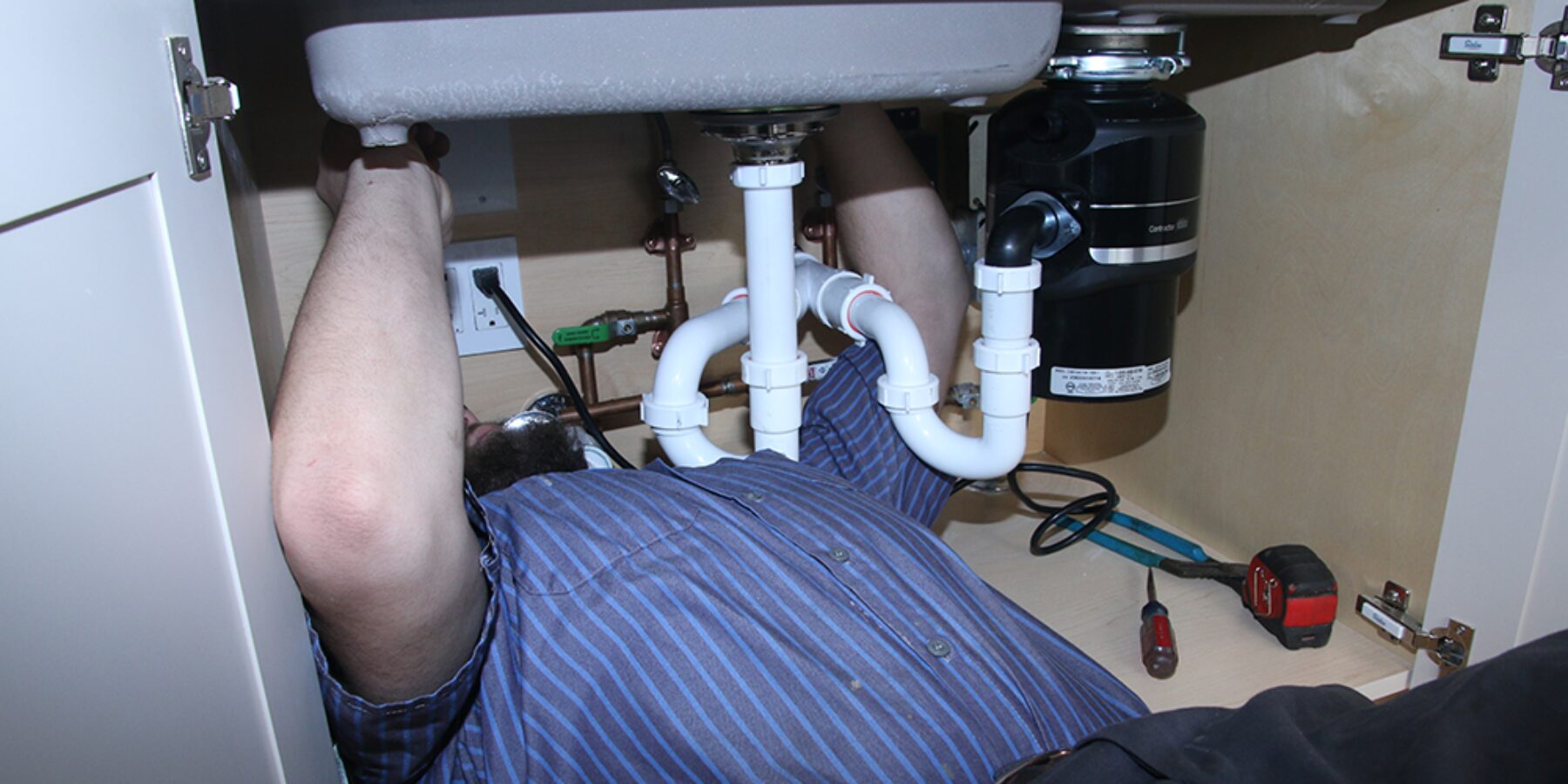Just how do you actually feel about Solved! How to Fix a Slow Sink Drain?

Introduction
We have actually all been there: You're brushing your teeth or cleaning your hands, and you observe the water pooling in the sink. As opposed to rapidly swirling down the tubes, it sticks around, turning your once-refreshing morning regimen into a mini overload scene. A slow-draining sink isn't simply aggravating; it's usually a sign of larger pipes issues prowling below the surface. The bright side is that the majority of slow-draining sinks can be taken care of with a little knowledge, a couple of fundamental devices, and some perseverance. Ready to tackle this task head-on? Let's roll up our sleeves and dive right in.
Comprehending the Root Causes Of a Slow-Draining Sink
Prior to you begin poking around in your pipes, it assists to understand what may be creating the downturn. Understanding the source makes it much easier to choose the ideal repair.
Typical Offenders Behind Slow Drain
So, what's clogging points up? Commonly, it's a blend of daily particles-- assume hair, soap scum, toothpaste deposit, and leftover food particles. Over time, these tiny bits accumulate and hold on to the pipe walls, slowly tightening the passage and making it harder for water to go through. In many cases, natural resource from tough water can also add to the crud, producing the perfect tornado for stubborn clogs.
When is it Time to Do Something About It?
If you see the water draining slower than common, it's a great idea to intervene quicker rather than later. Waiting as well long might bring about finish clogs, undesirable odors, and even pipeline damages. If the water takes more than a few seconds to remove after switching off the faucet, consider it a red flag and prepare to place on your do it yourself hat.
Tools and Products You'll Require
The right devices make all the distinction. The good news is, you won't require a completely stocked plumbing professional's van to get the job done.
Vital Devices for DIY Services
A plunger is your best starting factor. A small, sink-sized plunger produces suction that can displace small obstructions. For more relentless clogs, a drainpipe serpent (sometimes called a plumber's auger) works wonders. A set of handwear covers, a flashlight, and perhaps a set of protective safety glasses are additionally useful.
Suggested Cleaning Solutions
Light recipe soap and hot water can assist break down greasy build-up. A combination of baking soft drink and vinegar is a time-tested natural remedy, and chemical cleansers use a more green method. Keep chemical drain cleaners as a last option, as they can be extreme on your pipelines.
Security First: Precautions and Preparations
Prior to you launch into unclogging setting, think of safety and security. You're dealing with possibly unclean water and particles, so slip on a pair of handwear covers. If you're utilizing chemical cleaners, make sure the area is well-ventilated and follow the directions on the label.
Protective Equipment and Office Arrangement
Lay down some old towels or cloths around the sink location to capture splashes. Remove any type of products that may enter your means, like soap dispensers or toothbrush holders. See to it you have great illumination-- order a flashlight if required.
Step-by-Step Overview to Repairing a Slow-Draining Sink
Currently, allow's get into the nitty-gritty. This step-by-step procedure will guide you via basic methods to recover your sink's water drainage.
Action 1: Eliminate and Clean the Stopper
Commonly, the stopper (that small plug you push down to obstruct water) is the very first culprit. Remove it thoroughly and wipe any hair or gunk trapped around its base. Wash it completely before placing it back in place.
Action 2: Use a Plunger to Dislodge Debris
Got that bettor ready? Position it over the drainpipe and give it a few company pumps. The idea is to develop suction that can loosen any type of blockage. If you see littles particles drifting up, you get on the best track.
Step 3: Try a Drainpipe Snake or Cable Wall Mount
If the bettor does not suffice, it's time to highlight the drain snake. Gently feed it right into the drainpipe and spin as you go. You could feel some resistance-- that's likely the clog. Keep turning and pulling up until you remove the obstruction. If you do not have a drain serpent, a straightened out cable wall mount can operate in a pinch.
Step 4: Use a Do It Yourself Drainpipe Cleaner
A natural cleaner made from cooking soda and vinegar can break down residual grime. Pour half a mug of baking soda into the drainpipe, complied with by half a cup of vinegar. Allow it fizz for around 15 minutes, after that flush with hot water. This chemical reaction usually does marvels for minor clogs.
Tip 5: Rebuild and Check the Sink
Placed whatever back together and run the faucet. Does the water now swirl away at a respectable speed? If yes, provide on your own a pat on the back. Otherwise, do not anguish-- there are still a couple of even more tricks up your sleeve.
Alternate Approaches for Stubborn Clogs
Not all obstructions are developed equivalent. If your sink still refuses to comply, consider these different remedies.
Sodium Bicarbonate and Vinegar Technique
We already touched on this, yet it's worth keeping in mind once more. This gentle, eco-friendly method is much safer than chemical cleansers and often rather efficient.
Chemical Drain Cleansers
Enzyme-based cleaners make use of natural bacteria to absorb organic matter. They're an outstanding option if you're wanting to stay clear of severe chemicals. Simply bear in mind, they might take a bit longer to work their magic.
Chemical Drainpipe Cleansers: Benefits And Drawbacks
Chemical cleansers can blow up through challenging blockages quick, however they're not without disadvantages. They can create warm and fumes, damage pipes if used excessively, and position ecological risks. Utilize them sparingly, and always comply with the instructions very carefully.
Safety Nets to Keep Your Sink Flowing
Prevention is the best cure. By adopting a couple of straightforward practices, you can maintain your sink from decreasing to begin with.
Normal Cleansing Habits
Clean down the sink container and component location on a regular basis. Eliminate hair or food particles before they have a possibility to wash down the drain.
Avoiding Unsafe Compounds Down the Drain
Reconsider prior to disposing coffee premises, grease, or coarse veggie scraps down the sink. These perpetrators cling to pipeline walls, creating blockages in time.
Regular Upkeep Checks
Set up a fast monthly evaluation. Run warm water with the sink for a couple of mins, taking note of the flow. If it appears sluggish, act quick prior to it comes to be a full-blown obstruction.
When to Call a Professional Plumbing Professional
Often, regardless of just how hard you attempt, that obstruct simply will not move. That's when it's time to bring in the pros.
Indications That Suggest an Extra Severe Concern
If your sink drains slowly despite multiple efforts, or if you see water backing up in other components (like your shower or toilet), you may have an extra major plumbing problem prowling much deeper in the system.
Balancing DIY Initiatives with Expert Help
While do it yourself can save you cash and provide a feeling of accomplishment, there's no pity in calling an expert. An expert plumbing can analyze your whole pipes setup, ensuring there's no underlying damages or long-term issue that can cost you more in the future.
Comparing Costs and Long-Term Solutions
Before choosing, consider the big picture. A low-cost, quick fix could solve the issue momentarily, however buying a more irreversible remedy can conserve you cash and stress in the future.
Considering the Expenses of DIY vs. Professional Solutions
Do it yourself solutions frequently set you back little bit more than the price of a plunger or a bottle of baking soft drink. Specialist solutions, on the other hand, included a price but might protect against repetitive concerns and expensive repairs later on.
Investing in Top Quality Fixtures and Upgrades
If your sink's style adds to constant clogs, it might be worth upgrading to higher-quality components or changing the pipes layout. Consider this a financial investment in your house's functionality and comfort.
Conclusion
A slow-draining sink can seem like a minor irritability, but it's often an indication that your pipes needs a little TLC. By recognizing the root causes, utilizing the right devices and techniques, and dedicating to basic safety nets, you can keep your sink flowing freely. And when all else stops working, never ever wait to call in a professional-- your home's plumbing is worth the investment in care and upkeep.
How to Fix a Slow Sink Drain: 7 Methods
Clean the Stopper
Remove and clean the stopper. A pop-up drain stopper and the sloped shape of the sink are designed for optimal debris and build-up collection. If you do not have a drain zip tool, or the tool cannot clear out all debris, another option is to remove and clean the pop-up.
Most pop-ups are held in place with a nut attached to the drain just under the sink. To remove the pop-up, reach behind the drain pipe under the sink to find the pop-up nut. Once the nut is removed, the pop-up can be removed from the sink drain, cleaned, and reinstalled.
Use Homemade Drain Cleaner
Employ a DIY solution. A homemade drain cleaner can clean the drain pipes after the larger debris has been pulled out. The chemical reaction caused by combining two common and inexpensive household products, like vinegar and baking soda, can help break down the mucky build-up on the inside of the drain pipes and get the drain flowing freely again.
Pour 1/2 cup of baking soda down a slow-draining sink. Follow it with 1/2 cup of vinegar. Let the mixture rest for a few minutes. Rinse the solution with boiling water to clear the clog. Clear the Sink Overflow
Clean the overflow. The sink overflow is another place where debris and build-up can be collected over time. If a sink drains slowly and cleaning the drain doesn't work, try to clean the overflow.
The overflow opening is intended to divert water into the drain if it accidentally rises too high in the sink. It also allows air into the drain when the sink is filled with water, helping it drain faster.
Use a Plunger
Give it a good plunging. A plunger can be used on a slow sink drain; it does not have to be reserved for a complete drain stoppage. Plunging can help loosen and dislodge hair and debris in the pipe. To ensure the plunging motion is effective, cover the sink overflow with a rag or some duct tape to make a seal before plunging.
Use a Snake
Try a snake. If straightforward methods aren't working, consider getting a drain auger or snake to clear a bathroom or kitchen sink drain. A drain snake is a thin, flexible metal cable that can be wound or unwound on a reel. It has a drill or corkscrew-like end that can penetrate clogs, dislodge them, and pull them out.
Clean the P-Trap
Unclog the P-trap. If all other methods fail to clear a stubborn clog, the last step before calling a professional is removing and cleaning the P-trap or the drain pipe under the sink with a bend shaped like a "P" rotated 90 degrees, clockwise to the right. That U-shaped bend in the pipe is a top spot for gunk, like hair, food, grease, and debris, to build up and get clogged.
Once you remove the drain pipe, you need a bucket to catch residue, water, and debris. You might need Channellock pliers or a wrench if you can't unscrew the slip nuts by hand.
Tips to Prevent Slow-Draining Sinks
Sinks are only for water, soap, or toothpaste: Use toothpaste correctly and fully lather it in the mouth; do not let globs of toothpaste go undissolved down the drain. Stop hair and debris from going down the drain: Refrain from brushing your hair over the sink, or get a fine mesh drain hair catch for the drain hole. If shaving your face over the sink, wipe away the stubble with a washcloth, and rinse the washcloth and razor in a wash basin. Empty the water into the toilet or tub drain. Clean the sink stopper regularly: Remove the stopper and clean out any hair and dirt that may have lodged in the drain. Flush the sink with hot water regularly: Hot water will help move or loosen hardened or sludgy toothpaste, grease, mineral deposits, and hair. Some experts suggest using boiling water; however, beware since boiling water might melt PVC or crack porcelain.

Do you really like reading up on How to Fix a Slow Draining Sink? Make a remark down below. We will be happy to find out your opinion about this page. In hopes to see you back again in the future. Be sure to take the opportunity to distribute this blog post if you liked it. Bless you for being here. Return soon.
About This
 Spencer Elden Then & Now!
Spencer Elden Then & Now! Barret Oliver Then & Now!
Barret Oliver Then & Now! Brandy Then & Now!
Brandy Then & Now! Keshia Knight Pulliam Then & Now!
Keshia Knight Pulliam Then & Now! Peter Billingsley Then & Now!
Peter Billingsley Then & Now!